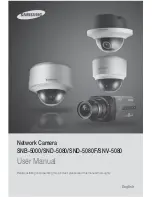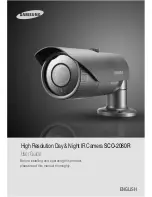
INSTALLATION
Page 9 of 36
All of the enclosures (control unit as well as sensor enclosures) are designed for harsh
conditions and offer both high ingress protection (IP66) as well as a high impact rating
(IK10) (equivalent to impact of 5kg mass dropped from 400 mm above impacted
surface).
The Emitter Unit
– Enclosure containing emitter sensor complete with 2m sensor
cable. This cable should be connected to the Control Unit (either directly or via junction
box).
The Receiver Unit
– Enclosure containing receiver sensor complete with 2m sensor
cable. This cable should be connected to the Control Unit (either directly or via junction
box).
The Control Unit
– Enclosure containing control board and communications ports.
This unit connects to emitter and receiver and serves as the interface to the PLC. It
requires a power supply of 24V or 110V (220V on request). This unit is usually
mounted to the side of the conveyor where it is easily accessed and the indications
and reset button are accessible.
The Belt Rip and Tear detector can operate in a standalon
e mode with “Trip” and
“Fault” outputs being hardwired directly to a PLC or MCC. Alternatively, the units are
equipped with onboard EtherNet//IP and Modbus TCP communications as a standard
to allow for complete integration into most control systems.
The units have comprehensive onboard self-diagnostics as well as built in sensor
testing. They can be easily coupled with the Prestart Warning (CS-PSW20) for visual
audible warning.
Anti-sabotage logic has been incorporated to prevent a forced sustained Reset.
Should the Reset button be forced in the ON position for longer than 10 seconds
– the
unit will issue a Fault output. The trip output will not be disabled and will still operate
under a belt rip condition.
The Sensor Healthy (Gree
n) and Trip/Fault (Red) LED’s on the primary (receiver) unit
are clearly visible to the operator to provide easy fault finding.










































